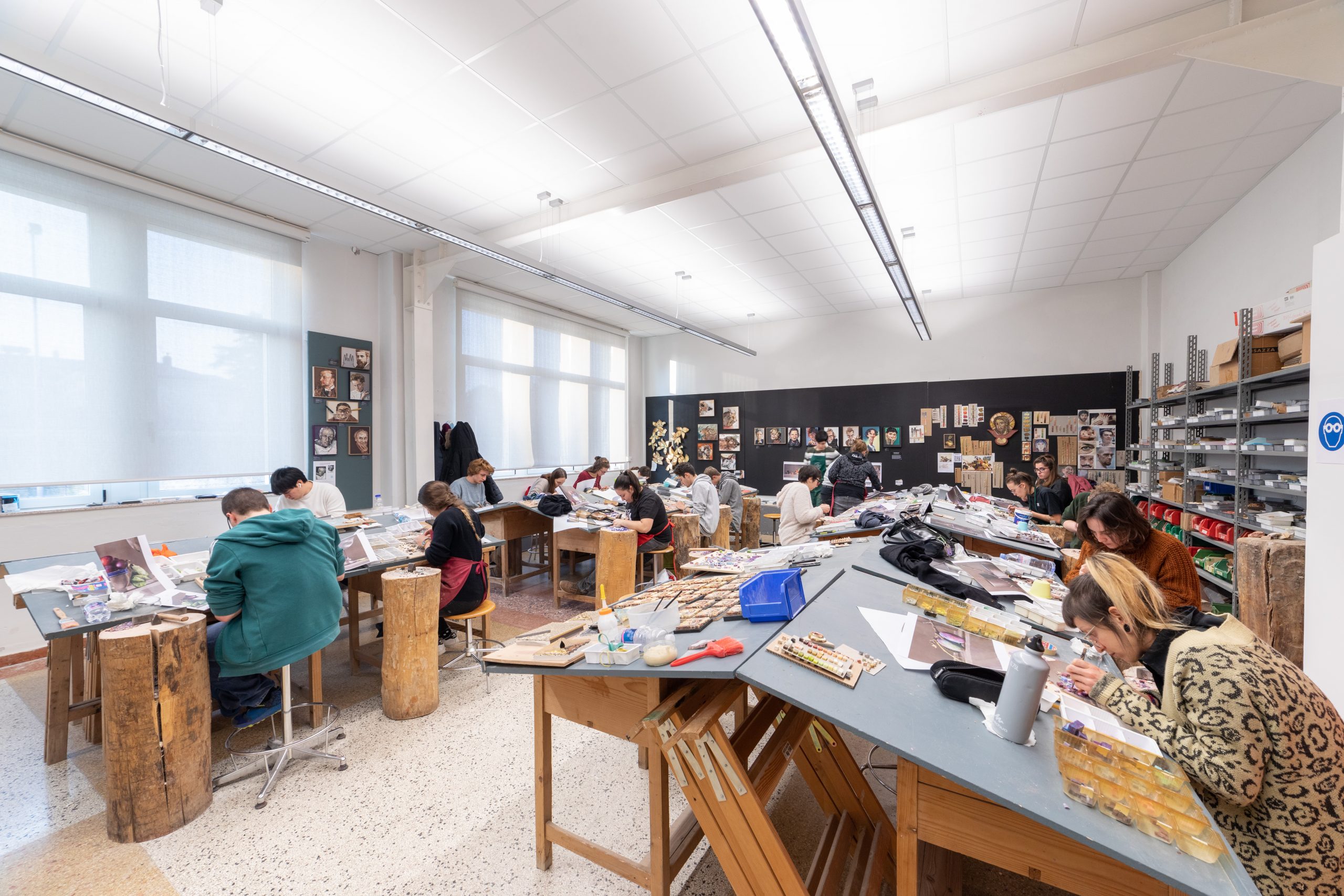
The rule of example
Talent, passion and “the code”: the schools of excellence, entrusted with the protection and transmission of a unique heritage of craft knowledge to tomorrow’s masters of the arts, for the first time collected in a bookThe publication of the book “La regola del talento. Mestieri d’arte e Scuole di eccellenza” (The code of talent. Métiers d’Art and Schools of Excellence. Marsilio Editori, March 2014) is part of a high-profile cultural project announced by Cologni Foundation of the Métiers d’Art in conjunction with Deutsche Bank Italia Foundation, marking the latter’s first official philanthropic, social and educational initiative in Italy. Readers will be introduced to some of Italy’s finest schools, true guardians of knowledge and know-how, opening their doors to the public for the first time. With a history often centuries old, these institutes are entrusted with the extraordinary task of preserving and transmitting a unique heritage of skills and knowledge. To train and support the new generations of master craftsmen is to promote and protect Italy’s remarkable tradition in culture, beauty and savoir-faire: more crucial than ever for the country’s economic and productive system.
The book is a tribute to all those who are engaged in this mission, often facing many difficulties. The 17 major schools described in the book were selected according to strict criteria: acknowledged leadership and tradition in their specific field, deep-rooted ties to the territory, recognition, high-level teaching standards, and the ability to combine tradition and innovation.
Though far from exhaustive, this virtuous selection provides an insight into the excellence achieved in the transmission of know-how. The book is part of a project that includes a new website that provides in-depth and extensive information about the many high-standard training centres across Italy. The schools introduced in this book are presented by their directors, head teachers and didactic coordinators, the same individuals who take personal responsibility for welcoming, motivating and preparing our young people each day, as well as guiding their talent and kindling the flame of their passion. “Young people are not jugs to be filled, but torches to be lit,” wrote Quintilian (35-96 A.D.). This is something the teachers are well aware of. They are often master craftsmen themselves, who mould talent abiding by the rules and the discipline without which even the greatest passion comes to nothing. The road to becoming a maître d’art is long and hard, but as Cesare De Michelis writes in his enlightening contribution to this book, it can be an extraordinary adventure, a way to rediscover the supremacy of the individual, the mystery of beauty, the fascinating role played by ability, skill and personality… A road that needs to be mapped out for young people and their educators, as a meaningful perspective on life and the professions.
Laila Pozzo’s breathtaking photography illustrates how these top-flight schools are not sanctuaries of knowledge, but places that are full of life. In these hothouses, talent is combined with manual skill, and teaching involves training in the workshops, following the masters’ example. A lesson that comes to us from the workshops of the Renaissance, and that these schools continue to put into practice. Schools proudly guard the secrets of their tradition, which are the result of the experience and know-how accumulated in the course of the centuries, as well as the expression of great regional vocations. At the same time, cutting-edge technologies can inject new lifeblood into this heritage, as the four major advanced training centres for restoration of the Italian Ministry for Cultural Heritage and Tourism (MiBACT) demonstrate: in Rome, the Istituto superiore per la conservazione ed il restauro (Institute of advanced studies in conservation and restoration) and the Istituto centrale per il restauro e la conservazione del patrimonio archivistico e librario (Central institute for book and archives conservation and restoration); in Florence, the Opificio delle pietre dure (leader in the field of art restoration); and in Turin, the most recent yet equally extraordinary training institute of La Venaria Reale. These are centres of excellence that have achieved an authoritative and international reputation thanks to the advanced technologies developed by their workshops, the invaluable allies of Italy’s unique savoir-faire.
Tradition is thriving and evolving in every sector in which the schools featured in this book operate: mosaic (Scuola mosaicisti del Friuli, Spilimbergo), glass (Scuola del vetro Abate Zanetti, Murano), ceramics (the time-honoured art institutes of Faenza and Caltagirone), jewellery (Istituto d’arte Pietro Selvatico, Padova), jewels and watchmaking (Tarì Design School, Marcianise), metal engraving (Scuola dell’arte della medaglia, Rome). Not to mention leather (Alta scuola di pelletteria italiana, Scandicci), shoes (the Footwear Polytechnic, Vigonza) and tailoring (Scuola di sartoria Nazareno Fonticoli, Penne). And the fascinating professions of stagecraft (Accademia Teatro alla Scala, Milan), violin making (Scuola internazionale di liuteria, Cremona), and haute cuisine (Alma, the international school of Italian Cuisine, Colorno). This variety of rich and complex training opportunities is provided by public institutes of national repute, professional schools linked to regional traditions and centres established by farsighted private companies with the aim of protecting and transmitting a cultural and productive wealth of knowledge that cannot be exported and must not be lost. This indispensable role is underlined by Giovanni Puglisi in his authoritative introduction: “Given the absence, in Italy, of specific public programmes to support direct transmission of knowledge from master to apprentice in the informal setting of the atelier and the workshop, the most effective means to protect our traditional arts and crafts is represented by the schools, institutes and centres which this book brings to the attention of the public. Indeed in some cases it is the only barrier to prevent the irreversible depletion of Italy’s time-honoured creativity.”

